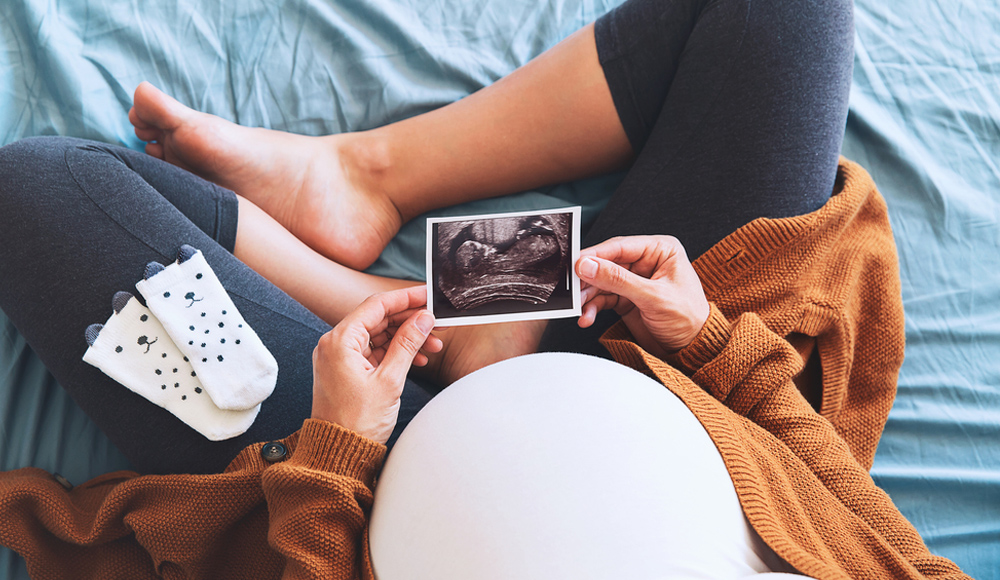When Does Human Life Begin? Thoughts of a Christian OB/GYN Physician
I am a Christian. I also happen to be an obstetrician/gynecologist. Obstetrics and gynecology (OB/GYN) is a specialty that is heavily laden with ethical issues, especially the question of when human life begins. Such challenges cause some medical students to shy away from the field. Is being a Christian incompatible with working in OB/GYN? For me, these two roles are not separate paths I walk on different days, but one and the same. Being a Christian informs what I do as an obstetrician and my education, training, and experience in OB/GYN have confirmed what I believe. If Christianity is true, it will be consistent with medical science and inform how I address ethical challenges within my field.
Knowledge and truth are important to me. Not only do I love to learn, but I also realize that the sincerity of my faith has no meaning if the object of my belief is not true. My love for knowledge was a factor in my pursuit of a career in medicine, and it also had a part in my conversion to Christianity.
I was raised in a nominally Christian home, attended church every week, and identified as a Christian. At eleven years old, I started reading the Bible every day, a discipline that would change my life. As I read, I saw that the Bible was consistent with the small extent of knowledge I had at that age. I was surprised to learn that there was much more to being a Christian than what I had realized. If the Bible was true, then Christianity changed lives. I longed for this change in my life and prayed every day, “God, please show me how to be a true Christian.” When I was thirteen years old, I attended a Christian camp where it was explained to me what Jesus’s death on the cross meant and that I had to choose to follow him. I clearly remember that night, in a cabin in the woods, surrendering my life to Jesus Christ. I received his forgiveness for my sins and chose to follow him. Although my conversion experience was not externally dramatic, it defined my life going forward. There was an evident change in my heart that has continued to this day, decades later. It all began with reading the Bible and absorbing that knowledge for myself.
In similar fashion, knowledge has guided my integration of the ethics of my work and my Christian life. In medical school one of my fellow students, who was also a Christian, said he had eliminated OB/GYN as a career option because there were too many ethical issues. I was well aware of them and they made me tremble, but I didn’t think I should shy away from hard things as a Christian. If what I believe is true, isn’t it worth taking a stand? Wasn’t my God big enough to provide guidance? I certainly didn’t choose OB/GYN because of them, but I knew that these issues were not a reason to avoid the field.
Tissue or Human Being?
The secular world often tells us that what is in the womb, whether at three days or six weeks, is “just tissue.” If this is the case, then when does this tissue become a human life? Some doctors say life begins when the baby can live outside the womb. Most babies born at 25 weeks survive and a minority have survived at 22 weeks.1 If the “tissue” becomes a human life when it can live outside the womb, then is a baby at 21 weeks and six days or 24 weeks and six days not a life? Does personhood suddenly get infused in that final hour? I do not find this reasoning to be a rational way to draw the line for when life begins. To form my view, I looked at the truths and evidences in both the Bible and science.
The Bible indicates that life begins at conception. Psalm 139:13 states, “For you created my inmost being; you knit me together in my mother’s womb.” The Psalmist also says, “My frame was not hidden from you when I was made in the secret place, when I was woven together in the depths of the earth. Your eyes saw my unformed body; all the days ordained for me were written in your book before one of them came to be” (Psalm 139:15–16). Scripture indicates that the developing embryo is indeed a life.
Science Points to Conception
The study of embryological development confirms my belief that life begins at conception. A human being has 23 pairs of chromosomes (diploid or 2N) and the oocyte (egg) and the spermatozoon (sperm) each have 23 single chromosomes (haploid or 1N). At fertilization, the spermatozoon penetrates the oocyte’s zona pellucida (wall), and the two cell membranes fuse. The DNA of both the sperm and the egg duplicate. The DNA intermingles and undergoes a division, resulting in an organism with 23 pairs of chromosomes (diploid, 2N). This one-cell organism has the exact genetic makeup that it will have its entire life. The human’s sex, eye color, and other factors are already determined. At the end of the second week, the embryo has a primitive uteroplacental circulation.2 And at the end of the fourth week, there is a beating heart.3 I have seen that tiny heartbeat countless times on an ultrasound at just four weeks after conception.4 I’ve seen miscarried babies with formed arms and legs. The Bible tells me that this “tissue” is a life, and what I see every day as an obstetrician confirms this truth.
Science and faith are in harmony. My Christian faith has not been challenged by the study of embryology but affirmed by it. My work in OB/GYN has confirmed that life is a gift from God and begins at conception. I am convinced, by both my work and my faith, that this beautiful life, with all its genetic materials at conception and a beating heart a few weeks later, is not just tissue. It is the crown jewel of creation formed by the Creator and Designer of the universe.
ENDNOTES
- Eszter Fanczal et al., “The Prognosis of Preterm Infants Born at the Threshold of Viability: Fog over the Gray Zone—Population-Based Studies of Extremely Preterm Infants,” Medical Science Monitor 26 (December 10, 2020): e926947, doi:10.12659/MSM.926947; Matthew A. Rysavey et al., “Between-Hospital Variation in Treatment and Outcomes in Extremely Preterm Infants,” The New England Journal of Medicine 372 , no.19 (May 7, 2015): 1806–08, doi:10.1056/NEJMoa1410689.
- Gary C. Schoenwolf et al., Larsen’s Human Embryology, 5th ed. (Philadelphia: Elsevier Saunders, 2015), 51.
- R. L. Bree et al., “Transvaginal Sonography in the Evaluation of Normal Early Pregnancy: Correlation with HCG Level” American Journal of Roentgenology 153, no. 1 (July 1989): 78, doi:10.2214/ajr.153.1.75; Peter M. Doubilet et al., “Diagnostic Criteria for Nonviable Pregnancy in the First Trimester,” The New England Journal of Medicine 369, no. 15 (Oct 10, 2013): 1448, doi:10.1056/NEJMra1302417.
- This paragraph uses embryologic gestation age, which is age from conception. Most physicians use menstrual age, which is age from the last menstrual period, or about two weeks prior to conception. I have routinely seen cardiac activity at six weeks of gestation, which is four weeks embryologic age.






